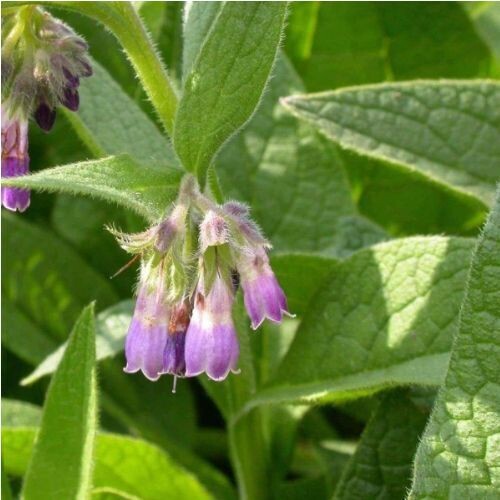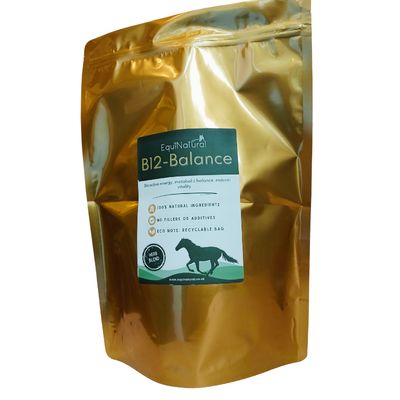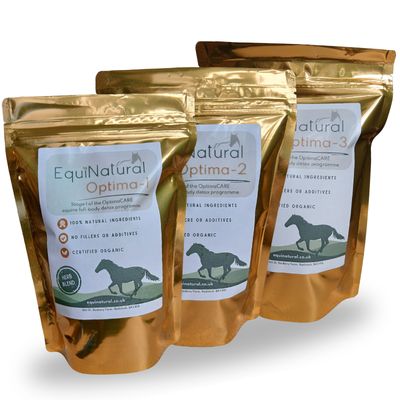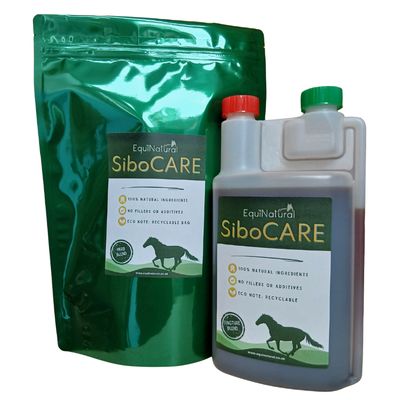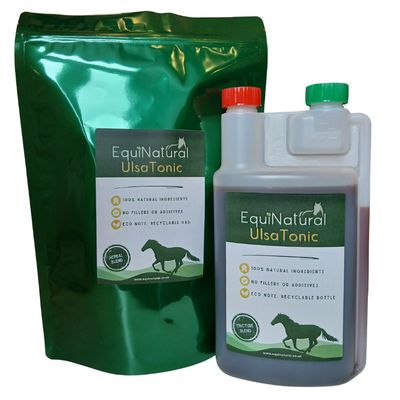COMFREY LEAF (Symphytum spp.) *Organic herb for horses - tissue soothing, cell nourishing, natural renewal
Benefits of Comfrey Leaf for Horses
Comfrey, the legendary ‘knit-bone’ herb, has been trusted for over 2,000 years to soothe, restore, and help the body repair itself.
Comfrey leaf is the grand matriarch of herbal repair, reassured for millennia as nature’s classic tissue herb, offering gentle, nourishing support for soft tissues and cellular renewal.
Rich in soothing mucilage and the famed compound allantoin , it helps maintain comfort and resilience wherever the body needs a little extra care.
Please note this is a nutritional, functional horse food supplement and not veterinary medicine. See Dr Kellon's Horse Sense - Nutrition is not 'Alternative' Therapy for more information.

Find Organic Comfrey Leaf in the EquiNatural range
You'll also find Comfrey Leaf across the following blends: B12-Balance , OptimaCARE , SiboCARE , & UlsaTonic - see below.
Composition & Feed Guide
💧Organic Comfrey Leaf Tincture
Our human-grade, certified organic tinctures give you a ready-to-absorb potent source of phytonutrients at the highest-strength available, for immediate absorption straight into the bloodstream and to the body’s cells.
- Symphytum officinale Folia
- Cold Macerated 1:3 35%
- Organic Cultivated
~ Feed Guide - 6ml/100kg bodyweight, daily in feed.
🌿Organic Dried Comfrey Leaf
Grown, harvested and dried without the use of agri-chemicals, non-irradiated and GMO free - see our Quality page for Quality Management & Certification Documents.
- Symphytum officinale, Dried Leaf & Herb, Cut
- Cultivated/wild harvested
- Origin Poland
~ Feed Guide - 5g/100kg bodyweight per day, i.e. 25g for a 500kg horse.
Functional Nutritional Value
Key Constituents: Allantoin (0.4%), mucilage polysaccharides, polyphenols, amino acids, phytosterols, triterpenoids, saccharides, and pyrrolizidine alkaloids (Tice, 1997)
Footnotes
- Laboratory tested for identification and compliance to the British and European Pharmacopoeia standards.
- Human grade.
- Please be aware that if you're purchasing our dried botanicals for human use, our dried range is cut to appropriate sizes for feeding to horses.
- ♻️ Eco Note: Our packaging is recyclable and refillable.
- 🧊 Storage Tip: Keep cool and dry.
Clinical Considerations
Comfrey Leaf is a gentle, traditional herb used to support soft tissues and natural renewal. Because all comfrey contains trace pyrrolizidine alkaloids (PAs), we use only carefully sourced, laboratory-tested leaf - the safest form.
It isn’t suitable for pregnant or nursing mares, or horses with known liver issues, but is otherwise well-tolerated when fed at the recommended rate.
Advisories
- Recommended for intermittent or seasonal use, or as part of a structured programme supporting soft tissues, gut comfort, or recovery.
- For longer-term feeding, periodic breaks are advised (e.g. 4–6 weeks on, followed by a short rest), particularly in older horses or those on multiple supplements.
Contraindications
- Not suitable for pregnant or nursing mares due to PA content and limited safety data.
- Avoid in horses with known liver disease, hepatic compromise, or suspected liver stress, as even low-level PAs are metabolised through the liver.
- Not advised in horses with a history of cancer, liver tumours, or unexplained weight loss, due to PA-related cautions in the herbal literature.
- Do not combine with other PA-containing herbs(e.g. borage, coltsfoot root, comfrey root) unless under professional guidance.
Potential drug interactions
- No significant interactions are reported at equine nutritional levels, but caution is advised alongside medications that rely heavily on hepatic metabolism, as the liver processes PAs.
- Use care with long-term NSAID therapy, where the liver may already be under increased metabolic load.
- No known interactions with common supplements or feed balancers when used at recommended quantities.
Comfrey in History & Tradition
Comfrey may look like a common hedgerow weed, but it has been treasured as a healing herb for over 2,000 years. From ancient Greece to Indigenous North America, monastery gardens to modern herbal ointments, comfrey has earned its reputation as a powerful vulnerary - a herb that helps the body knit and repair.
A long legacy of healing
The Greeks used comfrey as early as 400 BCE to stop bleeding and soothe lung complaints, while Dioscorides praised it for wounds and broken bones. Monks grew it in their gardens for villagers’ injuries and respiratory issues, and herbalist Nicholas Culpeper turned to comfrey root for everything from blood in the urine to hemorrhoids. Across cultures - from Lithuania to Turkey to Mexico - comfrey became a trusted ally for bruises, bone pain, and rheumatism.
Among the Cherokee people, comfrey was used both internally and externally: as a tonic, for digestive upsets, sprains, bruises, and even in ceremony. Cherokee herbalist J.T. Garrett described comfrey as one of the “seven sacred herbs.”
The ‘knit-bone’ herb
Comfrey’s very name reflects its power: Symphytum means “to grow together.” This points to its star compound allantoin, which encourages cell proliferation and tissue repair. That’s why poultices, salves, and ointments made with comfrey have been used for centuries to speed the healing of:
- Sprains, strains, and bruises
- Cuts, abrasions, and wounds
- Ulcers, abscesses, and skin irritations
Modern clinical studies back this up - showing comfrey preparations can speed wound healing in children and significantly reduce osteoarthritis knee pain compared to placebo.
More than skin deep
Comfrey’s rich mucilage makes it soothing for inflamed tissues, much like marshmallow root. Traditionally it has been used for whooping cough, dysentery, diarrhea, and even ulcers. It has also been used to calm postpartum hemorrhage and aid digestion.
Comfrey today
Beyond medicine, comfrey has been used as fodder, compost accelerator, and green manure in gardens. Though Henry Doubleday once dreamed it would replace gum arabic for postage stamps (!), today it still does what it does best: helping tissues repair and restore, and thriving in salves, ointments, and compresses.
Comfrey is, quite simply, a classic healing herb of the earth - ancient, effective, and enduring.
© EquiNatural 2025. All content is original work protected under copyright, and may not be re-published, duplicated, or rewritten for commercial use without permission.

